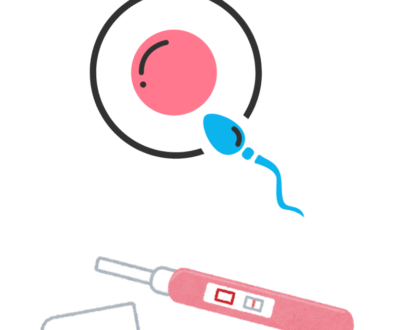Understanding BBT Charting for Fertility
When it comes to understanding your fertility, knowledge really is power. One of the best tools to help you understand your menstrual cycle is Basal Body Temperature (BBT) charting. This simple yet insightful method involves tracking your temperature every morning before getting out of bed, giving you an incredible window into your body’s natural rhythms. Let’s explore how BBT charting works, what it can reveal, and how it can be an invaluable tool for fertility acupuncture treatment.
What Is Basal Body Temperature Charting?
Basal Body Temperature (BBT) is your body’s lowest resting temperature, measured right after you wake up. BBT charting involves taking your temperature upon waking each day and plotting it on a graph or in a dedicated app to detect subtle changes throughout your menstrual cycle. These changes can tell you so much more than you might think.
During the first half of your cycle, oestrogen is the dominant hormone. This keeps your temperature in a lower range, typically between 36.11°C to 36.38°C. After ovulation, the hormone progesterone rises, creating a thermogenic shift that increases your temperature to around 36.44°C to 37°C. Though this change may be small—just 0.20°C to 0.60°C—it’s an essential indicator that ovulation has taken place. Seeing three or more consistently elevated temperatures is usually enough to confirm ovulation.
How to Track Your Basal Body Temperature
Tracking your BBT is simple and inexpensive, but it requires some consistency:
-
Buy a digital ovulation thermometer that measures to two decimal places from a pharmacy, or some smart watches have this feature installed.
-
Take your temperature each morning immediately upon waking, before you move or get out of bed. (This is the one I use, my discount code is LauraAcu)
-
Use an app or a graph to record your daily temperatures. Apps can make the charting process a lot easier and more visually informative.
-
Ideally, track your BBT for three or more months. The more data you have, the clearer the patterns will be.
What Can BBT Charting Tell You About Your Cycle?
BBT charting gives us insight into your body’s hormone patterns and can help confirm if you are ovulating regularly. Specifically, it helps us see:
-
Ovulation Confirmation: The thermogenic rise in temperature indicates ovulation has occurred, thanks to progesterone.
-
Phase Lengths: It helps determine the length of the follicular phase (before ovulation) and the luteal phase (after ovulation), which are critical for a healthy cycle.
-
Progesterone Levels: Sustained high temperatures post-ovulation suggest sufficient progesterone, whereas erratic or insufficient rises may indicate a deficiency.
-
Thyroid Health: A consistently low BBT can sometimes be an indication of a thyroid imbalance.
What Can Influence Your BBT Readings?
There are a few things that may make your BBT readings less reliable. These include:
-
Medications
-
Alcohol consumption the night before
-
Poor sleep quality, particularly fewer than three hours of quality sleep
-
Stress, illness, or changes like jetlag
-
Electric blankets or unusual room temperatures
If you’re finding the process of BBT charting stressful or frustrating, remember that this method isn’t for everyone. There are other options, such as Ovusense or Tempdrop, which can be less cumbersome.
What BBT Charting Can Reveal About Hormonal Imbalances
When we look at your BBT chart, we aren’t just looking for ovulation confirmation—we’re also interested in identifying patterns that could indicate hormonal imbalances or other fertility issues. Here are some common patterns that might appear:
-
Short Luteal Phase: If the luteal phase (the time from ovulation to menstruation) is shorter than ten days, this may indicate a luteal phase defect, which could impact implantation and early pregnancy.
-
Low Post-Ovulation Temperatures: If the temperature rise after ovulation is not well sustained, it may suggest low progesterone levels, which could affect the ability to maintain a pregnancy.
-
Erratic Temperatures: Erratic or inconsistent temperatures can sometimes point towards stress, thyroid imbalances, or other hormonal issues affecting your cycle.
How We Use BBT Charting in Fertility Acupuncture
As a fertility acupuncturist, I use your BBT chart to gain valuable insights into your cycle health and tailor your treatment plan accordingly. For example:
-
Confirming Ovulation: By confirming ovulation, we can determine if treatment is needed to support a healthy ovulation pattern.
-
Balancing Hormones: If we see signs of progesterone deficiency or short luteal phases, we can use targeted acupuncture points and herbal formulas to improve this.
-
Identifying Cold or Heat in the Uterus: From a TCM perspective, temperature patterns can indicate cold or heatin the uterus, affecting egg quality or implantation. Acupuncture and herbal medicine can help balance these conditions to create an optimal environment for conception.
Tips for Getting Started with BBT Charting
If you’re interested in using BBT charting to better understand your fertility:
-
Get the Right Tools: Purchase a BBT thermometer that records to two decimal places.
-
Stay Consistent: Take your temperature each morning at the same time, before getting out of bed.
-
Record More Than Just Temperature: Add notes about cervical mucus, stress levels, or any symptoms you experience to give a fuller picture.
-
Bring Your Chart to Appointments: Whether you’re seeing a fertility specialist or an acupuncturist, BBT charts are a useful tool that help tailor your treatment to your needs.
Final Thoughts
BBT charting is a simple yet powerful way to get to know your cycle better, detect ovulation, and spot any imbalances that might be holding you back on your fertility journey. While it’s not a diagnostic tool in itself, it provides invaluable information that can guide treatment, particularly when working with Traditional Chinese Medicine and acupuncture. If you already are or are ready to start charting and need help understanding your BBT results, let’s discuss it during your next appointment—I’m here to help you every step of the way.




